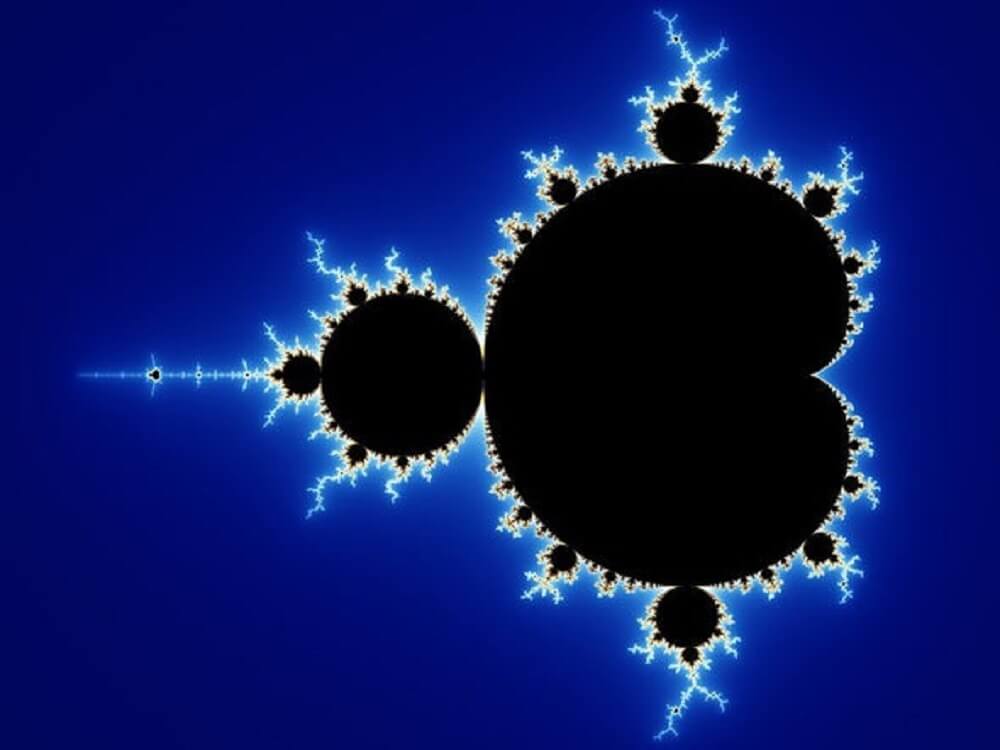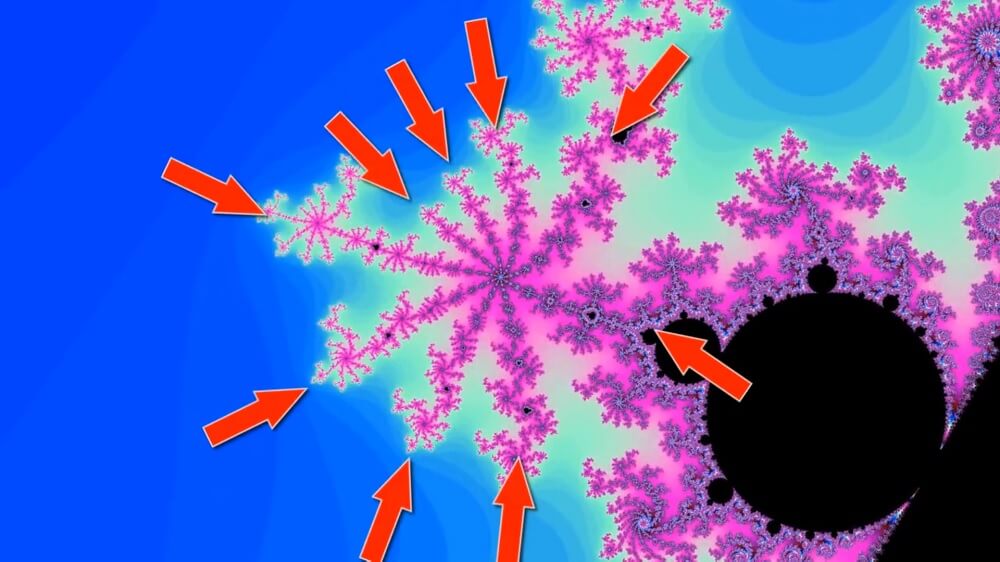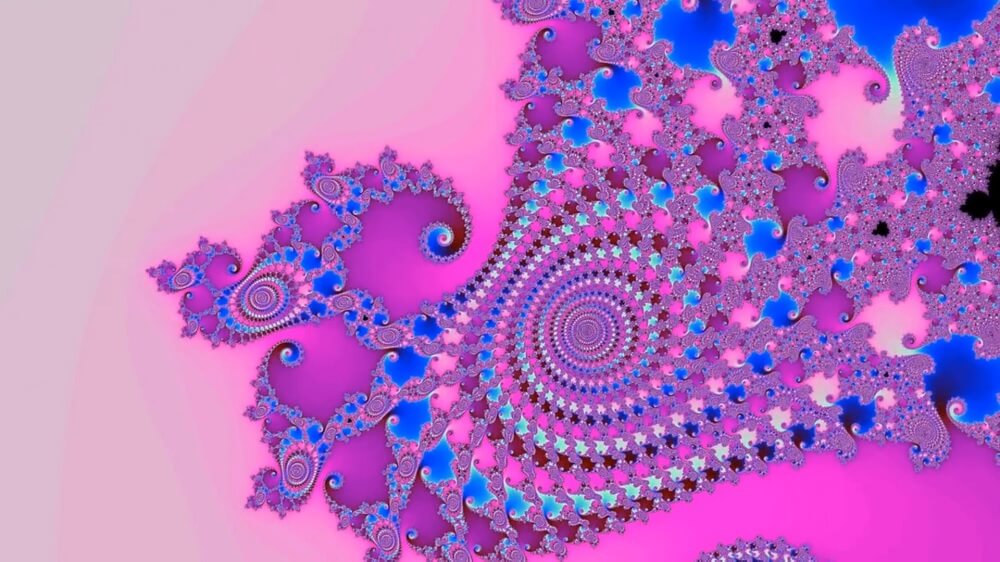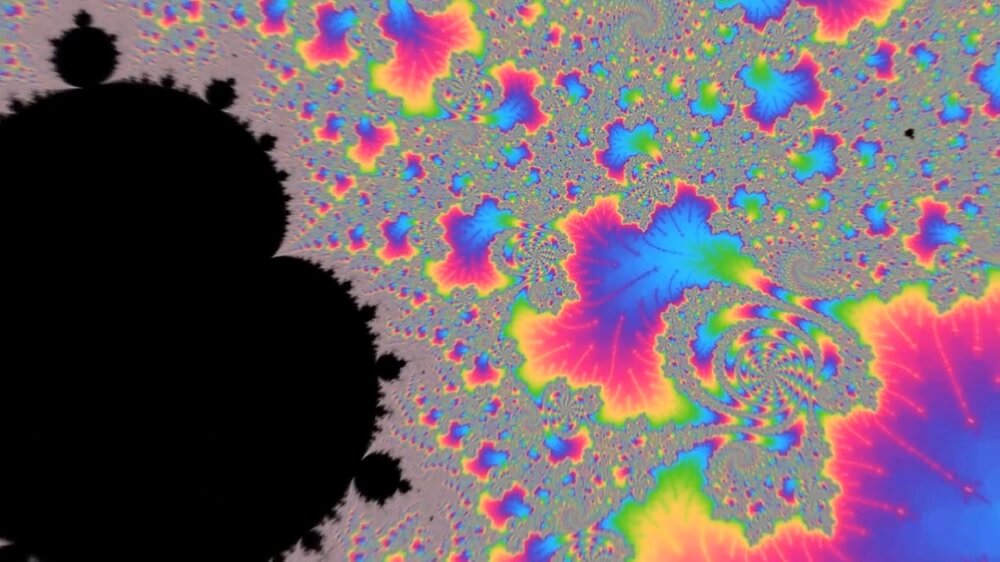The Mandelbrot Set
Mandelbrot set, a famous fractal that is a badge of honor for mathematicians. One way of defining the Mandelbrot set is by looking at how complex functions behave under repeated iteration. Here, “complex functions” are not necessarily terribly complicated; they’re functions that are defined on the complex numbers, numbers that have the form a+bi where a and b are garden-variety real numbers and i is √-1, often slandered as “imaginary.”

The functions in question have the form f(z)=z2+c, where c is a complex number. For each c, we seed the function by plugging in 0 as the initial value for z. Then we take whatever we get out and plug it back into the function. As we iterate the function, one of two things can happen: either the iterates get larger and larger in general, moving further and further away from 0, or they stay close, possibly bouncing around the area wildly but never getting very far from 0.

The values of c for which these iterates stay close to 0, colored black in the picture at the top of this post, make up the Mandelbrot set. The other points are colored based on how quickly their iterates run away to infinity. Aside from its inherent beauty, the Mandelbrot set has a few mathematically fascinating properties. Its complicated structure demonstrates what mathematicians mean by chaos: points very close to each other can have dramatically different behavior, and around the edges of the set, it’s basically impossible to predict whether a point is going to go one way or another. It also has surprising and interesting connections to other fractals called Julia sets.

Mathematicians are still trying to solve some of the mysteries of the Mandelbrot set. In the early 1980s, Adrien Douady and John Hubbard proved that it was connected; in other words, that there aren’t tiny gaps separating any bulbs of the set from any other ones. Mathematicians still don’t know whether the Mandelbrot set is locally connected. The exact definition of this property is a little technical, but the idea is that if you zoom in on any point in the set, does it eventually look like a nice connected little blob? Mathematicians know that the Mandelbrot set is locally connected at a lot of its points, but it’s not known yet whether the entire thing is.





























Comments
Just curious
Is there a video (or someone that can make one) following 1 color at a time in the Mandelbrot Set… To give perspective in that way?
rezae
Hi,
I didn’t find something like the one you want but I’ve got some interesting but there is another concept named Mandelbulb which works with polar coordinate I guess it can help you to understand fractals specially Mandelbrot better.